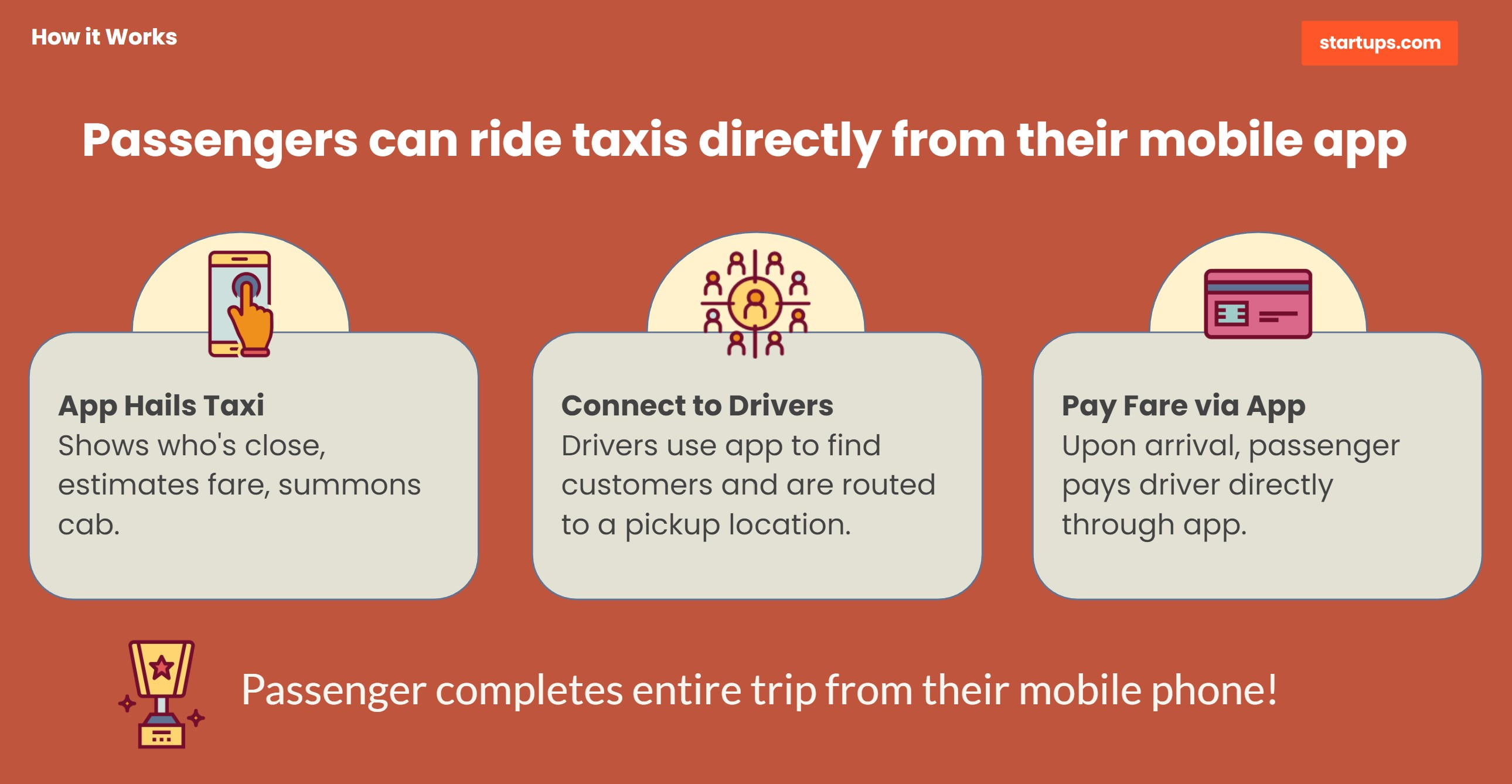The Startups Team

Our "How it Works" slide is where we begin explaining the mechanics of our solution in a pitch deck presentation. It's notably different than the Solution Slide of a pitch deck which sometimes confuses startup founders. We'll explain how the best pitch decks walk venture capitalists and angel investors step-by-step through their products.

How Potential Investors view the How it Works Slide
When raising money from potential investors, a successful pitch deck focuses on the needs of the audience first (read: investors). Every word in our pitch deck should be tailored to the 2 unique selling point goals they have.
Investor: "Do I understand how it works?"
In our solution slide, we explained what the product does. Now we have to begin convincing investors that we have the perfect recipe to deliver on this value proposition. One of the challenges we run into as Founders is forgetting that our audience doesn't necessarily comprehend the product as we do. We've been thinking about this non-stop - some random venture capital investor has been thinking about this for 60 seconds (or less!) So we need to make sure our explanation is crystal clear.
Investor: "Will this be effective?"
Even if the potential investors understand the product, they may not believe it will be effective. For example, many investors understood the market opportunity for Airbnb or Uber, but they doubted whether they would be effective. (Having strangers get in other strangers' cars and live in their homes was a big stretch!) We need to satisfy the investor's natural skepticism if we plan to secure funding.
The "How it Works" Pitch Deck Template
Fortunately, there's a perfect pitch deck template for building your How it Works slide. This is where our slide deck begins to transform from a high-level concept to an actual business model that we can replicate and scale.

Step 1: State the Goal
We begin with the pain point of the customer. This is exactly what we addressed on our first slide, the Problem Statement. In a startup pitch deck, the problem and solution slides should be woven perfectly into this step.
Step 2: Show the Critical Path
The best pitch decks use the fewest, most important steps a customer needs to take to unlock the value in our product or service. This is where a lot of Founders go off the rails with crazy visuals, screenshots, mockups, and other graphics which tend to confuse investors more than anything.
Step 3: Celebrate the Outcome
Once we've provided only the most critical information to demonstrate the process, we need to remind investors what the big victory for the customer is. This step ties our problem slide, solution slide, and product slide together into a single cohesive step. It also sets the stage for how we'll differentiate ourselves from the competition later in the deck.
Now that we've got an idea of what the perfect pitch deck slide looks like, let's refine how to approach each step in detail.

Pitch Deck Step #1: State the Goal of the Product or Service
Let's begin by reminding our potential investors what problem the business solves beautifully. While this may sound easy, many Founders immediately jump into the nitty gritty mechanics of the product without restating the customer's goals.
Instead of explaining the customer's goals, they immediately jump into the product:
"Uber connects drivers and passengers through our advanced custom built AI algorithm to dynamically match pricing."
Yes, that's how Uber works. But our business exists to solve the problem of helping a customer hail a cab. Without opening up with what our customer is trying to achieve, we lose sight of why our process matters.
Let's reword that to focus on the customer first:
"Passengers can hail taxis directly from their mobile app."
That's it. That's what our competitive advantage is to our target market and what delights customers. The first step of this slide answers the question of why the customer needs our product or service beautifully.
Pitch Deck Step #2: Show the Critical Path
Now we're ready to walk through how the process works. Once again, brevity is our friend. We want to substitute long narratives for a few bullet points, condense two slides (or more) into just this slide, and only focus on non-obvious steps.
Here's an example of the "how it works" slide for Uber already spiraling out of control:
1. Customer downloads App
2. Customer creates an account
3. Customer searches for available cab
4. App connects with Driver…
We don't need any of this in our pitch deck! A successful pitch deck will narrow the steps into only the most critical aspects. For example, we don't need to mention in any pitch deck presentation that our app needs to be downloaded or that someone will create an account — that's a given.
Here's the same process broken into just the most basic elements:
1. App Hails Cab - Shows who's close, estimates fare, summons cab
2. Connect to Drivers - Drivers use app to find customers and are routed to a pickup location.
3. Pay fare via App - Upon arrival, passenger pays driver directly through app.
That's it! Our product slide just needs to explain the key points and stop there! Complexity is the enemy in everything from the traction slide to the competitive landscape to this product slide. You'll hear us repeat this over and over!

Pitch Deck Step 3: Celebrate the Outcome
The last step of our pitch deck template is to "celebrate the outcome" in our product slide. Founders raising money get so excited to talk about their product that they often forget the most basic sales strategy of them all — celebrating the outcome!
We always need to remind our friendly venture capitalists that this business solves the problem beautifully, and it kind of helps just to say it:
"Passenger completes entire trip from their mobile phone."
At this point, we've completed the whole product slide journey. But this is where Founders once again go off the rails. We want to load up our pitch deck with 20 other things this product can do as well! More is better, right?
Definitely not. Our goal is to keep the pitch deck as tight as possible and focus on only the most high-value items.
Example of a Perfect How it Works Slide for a Startup Pitch Deck.
Let's take a look at what happens when we apply our pitch deck template to our how it works slide:

We open up this part of the pitch deck with a single, declarative sentence: "Passengers can ride taxis directly from their mobile app." Perfect. That sets the stage for potential investors to know exactly what we've set out to do.
Next, we have our 3-step explanation of how the product works. Notice that we've built these visuals around nothing more than what our customer experience needs to be — we don't need complicated graphs, pie charts, or lengthy comparisons to our competition.
Lastly, we've added a single declarative sentence "Passenger completes entire trip from their mobile phone!" to close the loop and claim our victory.
Voila! The Perfect "How it Works" Slide!
The reason this works is because we've avoided taking detours. We're only focused on the solution that fits the market size we're after and we can easily map all of our key metrics in the business model to this specific outcome.
Find this article helpful?
This is just a small sample! Register to unlock our in-depth courses, hundreds of video courses, and a library of playbooks and articles to grow your startup fast. Let us Let us show you!
Submission confirms agreement to our Terms of Service and Privacy Policy.
Already a member? Login
No comments yet.
Start a Membership to join the discussion.
Already a member? Login